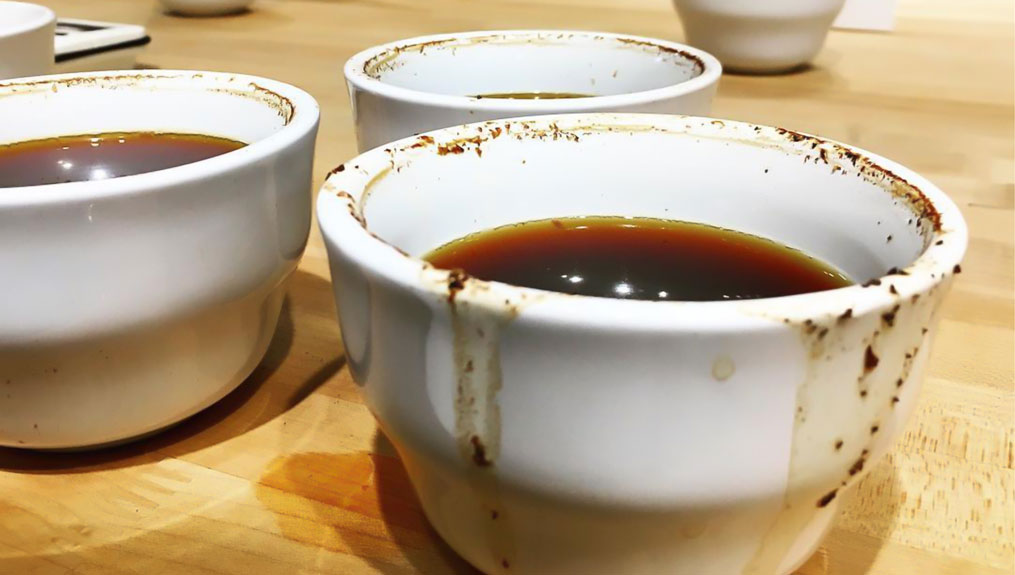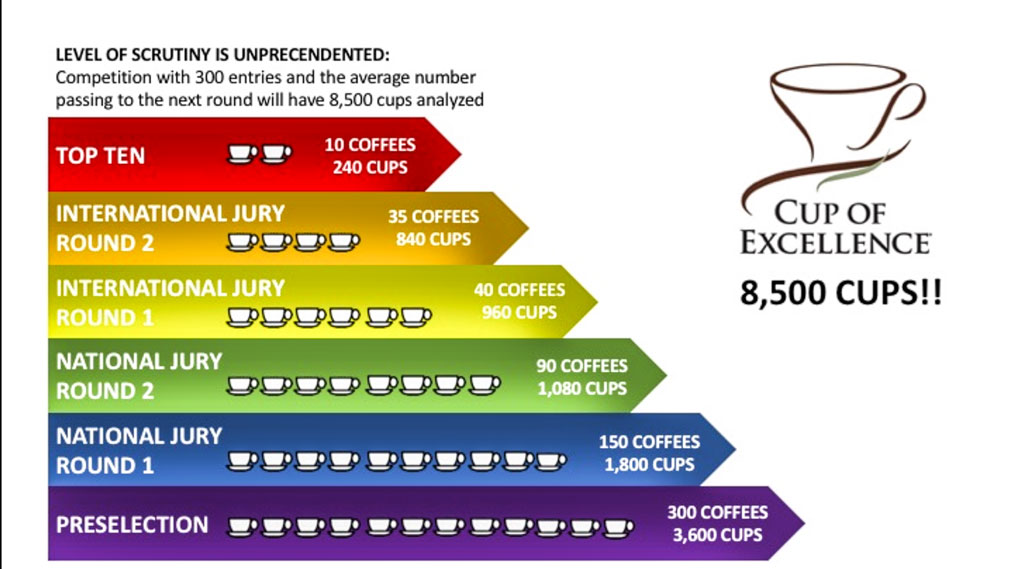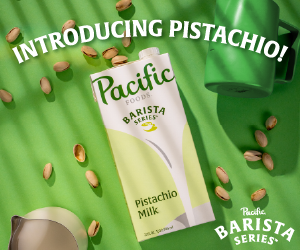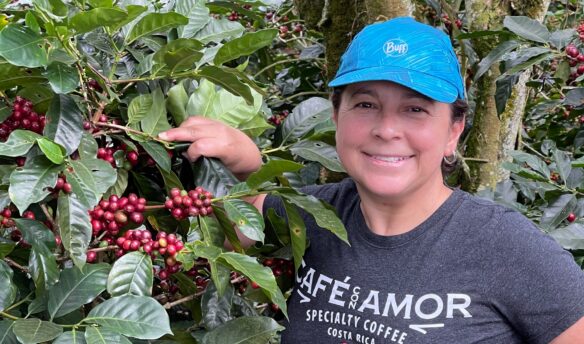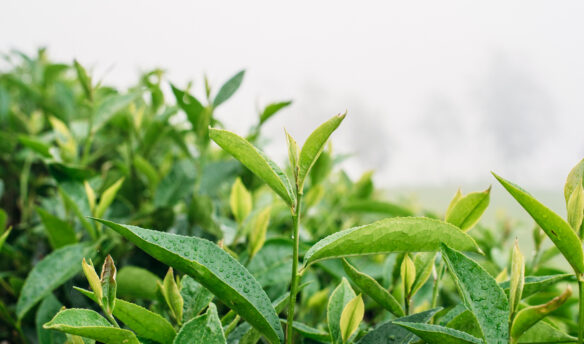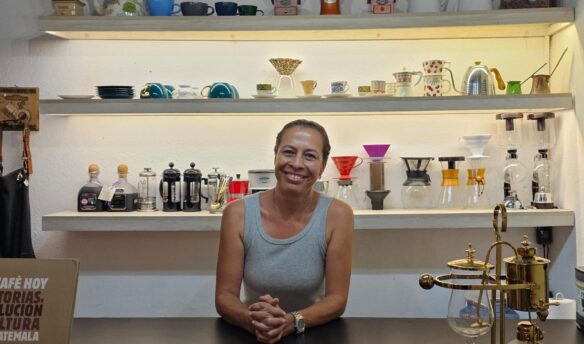PORTLAND—After a year of traveling around the world, tasting thousands of coffees, and setting multiple auction records, the Cup of Excellence program culminated in an intimate showcase cupping of all the program’s top-graded coffees from each competing country. Held on Saturday, December 1, this was the second year that the organization held its Cupping the World event at the Alliance for Coffee Excellence headquarters in Portland, Oregon.
The evening began with Darrin Daniel, ACE’s Executive Director, welcoming guests to join him in a blind tasting of the 12 different winning coffees from the 2018 Cup of Excellence competitions: Brazil Natural & Pulped Natural, Colombia, Peru, Burundi, Rwanda, Costa Rica, Nicaragua, Honduras, El Salvador, Guatemala, and Mexico. Each cup placed on the table had only an envelope with a random three-digit number next to it for identification.
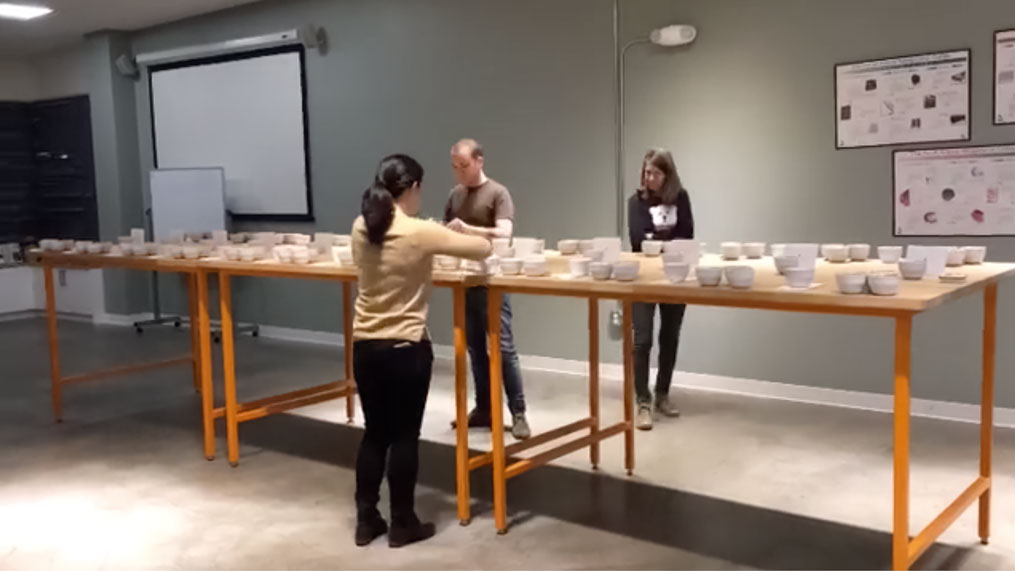
The roughly 30 guests of coffee buyers, baristas, and enthusiasts alike queued up to methodically make their way down the line of coffees, taking in the aromatic grinds, stopping often to marvel at a powerfully fragrant cup or discuss their own hypothesis of where the beans originated. Once tasting commenced, the room was filled with the sounds of slurping, frequent praise for certain cups, and further dissection of each cup, hypothesizing its every detail.
After half an hour of repeatedly going through the line, everyone put down their spoons for the reveal of where each coffee had originated from and its specs. Daniel first opened the floor to Erin Wang, Cup of Excellence’s new Senior Manager who stepped into the role this year and acted as head judge for seven of the 12 competitions. Wang detailed her experiences of the last year, how each competition serves as research into the country and reveals national and international trends. Some of those trends and insights she shared were that more Geshas were entered into and won competitions this year than ever before, Nicaragua’s farmers are struggling in the current political upheaval, and this year resulted in some of the highest prices ever paid in the competition’s history.
The first reveal of the evening was cup #534, a coffee that the room came to a consensus was the best of everything on the table. The coffee was a Pulped Natural Gesha from Chapada de Minas in Brazil, which had the highest competition score of all the coffees that year at 93.89. Guests wrapped up the event with a catered reception with food from Proud Mary Coffee and talks to prepare for 2019’s schedule.



